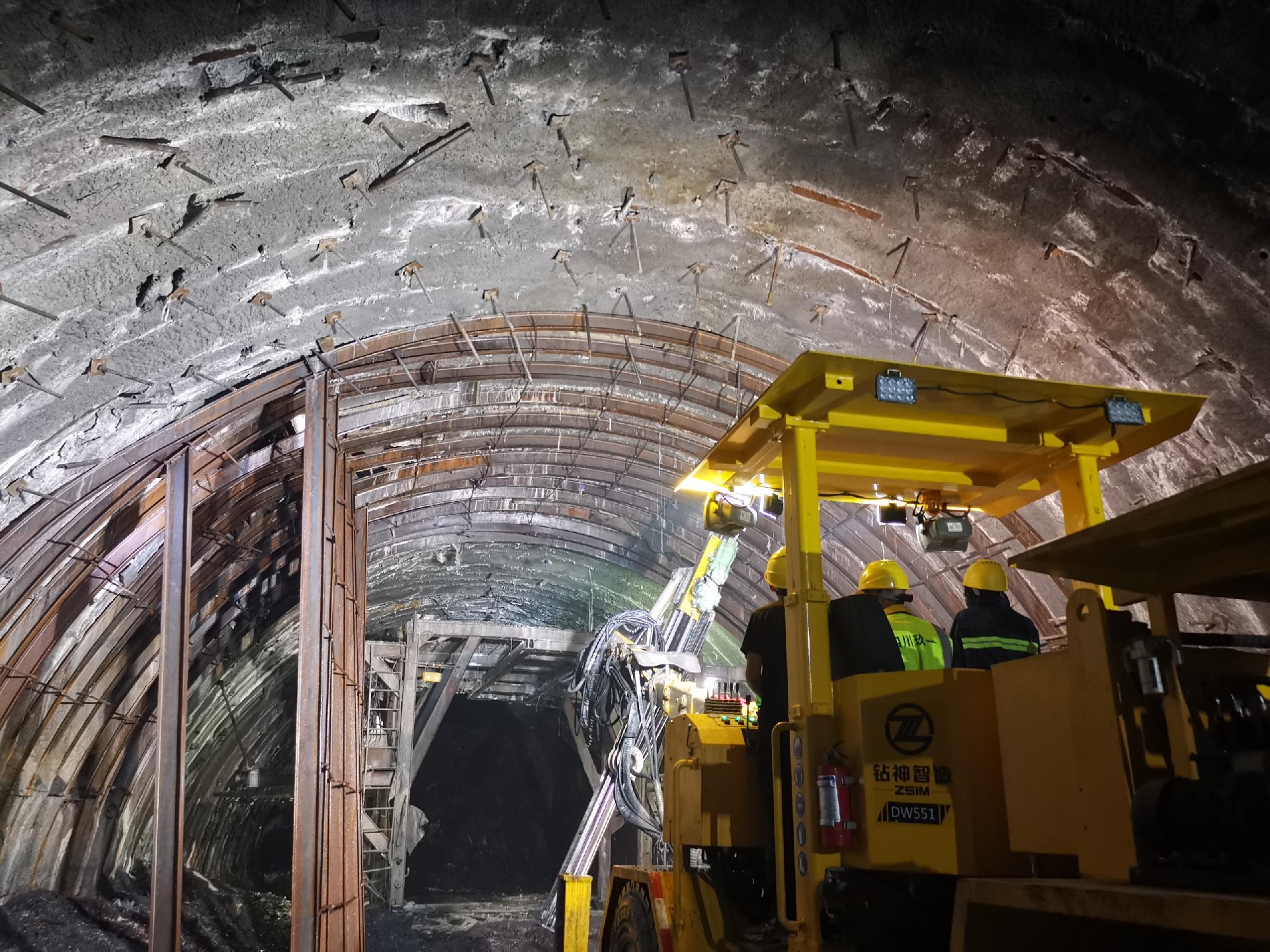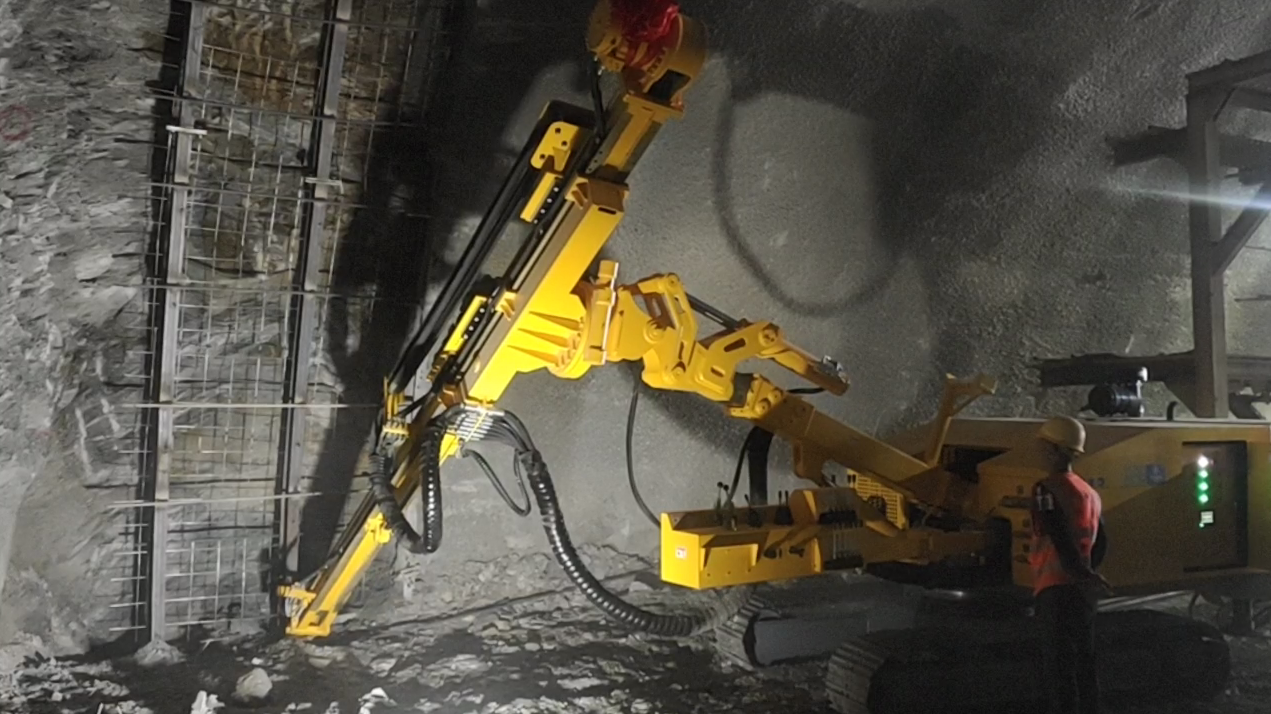Tunnel initial support refers to the temporary or semi-permanent support structures constructed immediately after excavation in tunnel engineering. Its core functions include controlling rock mass deformation, maintaining excavation face stability, ensuring construction safety, and creating safe conditions for the subsequent installation of secondary lining (permanent support).
It is a critical component of modern tunnel construction, particularly in the New Austrian Tunneling Method (NATM).
I. Core Objectives and Functions
1. Immediate sealing of the surrounding rock: Immediately after excavation, sprayed concrete is applied to isolate the surrounding rock from the weathering and softening effects of air and water, preventing a decrease in rock strength and relaxation.
2. Controlling deformation and relaxation: Restricting stress redistribution and deformation development caused by excavation, preventing excessive relaxation, instability, or collapse of the surrounding rock.
3. Providing radial constraint: Through close contact between the support structure and the surrounding rock, radial pressure is applied to help the surrounding rock utilize its self-supporting capacity (a core principle of the New Austrian Tunneling Method).
4. Stabilize the excavation face: Ensure that the excavated section remains stable before the next excavation cycle to ensure the safety of personnel and equipment.
5. Transfer loads: Transfer part of the surrounding rock pressure to the subsequent secondary lining or deeper stable rock mass (via anchor bolts).
6. Prevent local rock falls: Prevent loose rocks from the excavation contour face from falling and causing injury or damage.
7. Interact with the surrounding rock: Form a “support-surrounding rock” co-bearing system to fully utilize the surrounding rock's inherent bearing capacity.

II. Main Components (Common Materials)
1. Sprayed Concrete
1) Function: Rapidly seal the rock surface, provide surface support and constraint, prevent weathering, bond rock fragments, and work in conjunction with reinforcing mesh/steel arches to form a shell structure.
2) Types: Dry spray (gradually phased out), wet spray (mainstream, better quality, less rebound, lower dust), steel fiber sprayed concrete (replaces reinforcing mesh, enhances toughness and crack resistance).
2. Anchor Bolts
1) Function: Penetrate into the rock mass, anchoring loose rock within the loose zone to stable rock layers at depth, forming a “composite beam” or “reinforced arch,” significantly enhancing the integrity and self-supporting capacity of the surrounding rock. Provides radial and tangential constraints.
2) Types: System mortar anchor bolts (most common), hollow grout anchor bolts, self-drilling anchor bolts, friction-type anchor bolts (slotted tube type, expanding shell type), prestressed anchor bolts/cables (for special reinforcement).
3. Reinforcement mesh
1) Function: Installed between the rock surface and the first layer of sprayed concrete (or embedded in the sprayed concrete) to enhance the integrity, bending, and shear resistance of the sprayed concrete, prevent shrinkage cracking, uniformly distribute stress, and control local spalling.
2) Materials: Typically made of Φ6–Φ10 reinforcing bars welded or tied into a grid (e.g., 150 mm × 150 mm, 200 mm × 200 mm).
4. Steel Arch Frame
1) Function: Provides strong immediate support in poor rock conditions (soft, fractured, or soil tunnels) or for large spans. It withstands early high rock pressure, controls significant deformation, and provides a supporting framework for sprayed concrete.
2) Types:
① Steel Arch Frame: I-beam steel, H-beam steel, U-beam steel. High strength and stiffness, but slightly poorer bonding with sprayed concrete, requiring welded tie bars.
② Grid steel frames: Truss structures welded from main bars and stirrups. Excellent bonding with sprayed concrete, strong overall integrity, lightweight, easily adaptable to tunnel shapes, and the mainstream form.
5. Locking foot anchor bolts/anchor pipes:
1) Function: Specifically used to secure the arch feet of steel arch frames, preventing them from sinking, shifting inward, or twisting, ensuring the stability and load-bearing capacity of the steel arch frames. Critical!
III. Typical initial support forms (combined based on rock mass grade and engineering requirements)
1. Good rock mass: System anchor bolts + reinforcing mesh + sprayed concrete
2. Moderate rock mass: System anchor bolts + reinforcing mesh + sprayed concrete (may require local reinforcement)
3. Poor rock mass: System anchor bolts + reinforcing mesh + steel arch frames (grid or structural steel) + sprayed concrete + lock foot anchor bolts (tube)
4. Weak and fractured rock mass/shallow burial section/large deformation section: Reinforced system anchor bolts (may be extended and densified)/prestressed anchor cables + reinforcing mesh + dense steel arch frames + sprayed concrete (may be thickened or reinforced with steel fibers) + toe anchor bolts (tube) + may add temporary invert arch/temporary cross braces.
4. Design Principles and Construction Key Points
1. Timeliness: “Early closure, rapid ring formation” is the core principle. Construction should be carried out promptly after excavation, especially for arch closure.
2. Close contact: Support structures (especially sprayed concrete and steel frames) must be in close contact with the rock surface, leaving no voids. Otherwise, they cannot effectively provide constraint and may lead to local stress concentration failure.
3. Combination of flexibility and rigidity: Support
Translated with DeepL.com (free version)
4. Steel Arch Frame
1) Function: Provides strong immediate support in poor rock conditions (soft, fractured, or soil tunnels) or when spans are large. Withstands early high rock pressure, controls significant deformation, and provides a supporting framework for sprayed concrete.
2) Types:
① Steel Arch Frame: I-beam steel, H-beam steel, U-beam steel. High strength and stiffness, but slightly poorer bonding with sprayed concrete, requiring welded tie bars.
② Grid steel frames: Truss structures welded from main bars and stirrups. Excellent bonding with sprayed concrete, high structural integrity, lightweight, easily adaptable to tunnel shapes, and the mainstream form.
5. Locking foot anchor bolts/anchor pipes:
1) Function: Specifically used to secure the arch feet of steel arch frames, preventing them from sinking, shifting inward, or twisting, ensuring the stability and load-bearing capacity of the steel arch frames. Critical!

III. Typical initial support forms (combined based on rock mass grade and engineering requirements)
1. Good rock mass: System anchor bolts + reinforcing mesh + sprayed concrete
2. Moderate rock mass: System anchor bolts + reinforcing mesh + sprayed concrete (with possible local reinforcement)
3. Poor rock mass: System anchor bolts + reinforcing mesh + steel arch frames (grid or structural steel) + sprayed concrete + lock-foot anchor bolts (tube)
4. Weak and fractured rock mass/shallow burial section/large deformation section: Reinforced system anchor bolts (may be extended and densified)/prestressed anchor cables + reinforcing mesh + dense steel arch frames + sprayed concrete (may be thickened or reinforced with steel fibers) + toe anchor bolts (tube) + may add temporary invert arch/temporary cross braces.
IV. Design Principles and Construction Key Points
1. Timeliness: “Early closure, rapid ring formation” is the core principle. Construction should be carried out promptly after excavation, especially for arch closure.
2. Close contact: Support structures (especially sprayed concrete and steel frames) must be in close contact with the rock surface, leaving no voids. Otherwise, they cannot effectively provide constraint and may lead to local stress concentration failure.
3. Combination of Flexibility and Rigidity: The support system should have a certain degree of flexibility (allowing the surrounding rock to undergo controlled deformation to release stress) while also having sufficient rigidity (to prevent excessive deformation and instability). Anchor bolts provide flexible restraint, while steel frames provide greater rigidity.
4. Closed loop: The support structure should be closed into a loop as quickly as possible in the cross-section (including the invert or temporary invert), forming a stable closed structure, which is critical for controlling deformation.
5. Information-based construction: Construction should be carried out according to the design, but must be adjusted dynamically based on monitoring and measurement results (such as crown settlement and peripheral convergence), adjusting support parameters (such as thickness, steel frame spacing, anchor rod length and density, etc.). This is the essence of the New Austrian Tunneling Method (NATM).
6. Quality control: The strength, thickness, and density of sprayed concrete; anchor bolt length, angle, and grout saturation; fabrication and installation accuracy of steel frames, connection quality; and construction quality of toe anchor bolts must all be strictly controlled.
In summary, initial support for tunnels is the core technology for safe and efficient modern tunnel construction. It achieves this through the flexible combination and timely application of components such as sprayed concrete, anchor bolts, reinforcing mesh, and steel arches, actively controlling rock mass deformation, maximizing the rock mass's self-supporting capacity, and forming a stable temporary load-bearing system that interacts with the rock mass. This lays a solid foundation for the smooth progress of tunnel engineering and the ultimate structural safety. Its design and construction must adhere to the principles of “timely, close-fitting, enclosed, and dynamic adjustment.”
Translated with DeepL.com (free version)